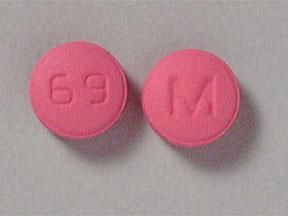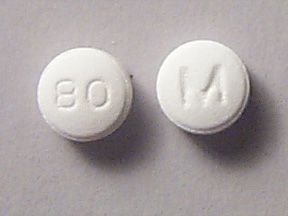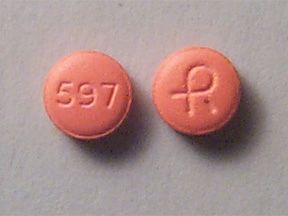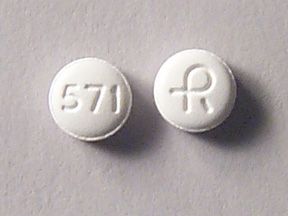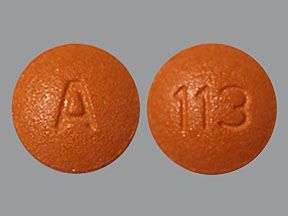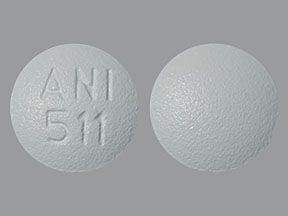We include products we think are useful for our readers. If you buy through links on this page, we may earn a small commission. Here’s our process.
Healthline only shows you brands and products that we stand behind.
Our team thoroughly researches and evaluates the recommendations we make on our site. To establish that the product manufacturers addressed safety and efficacy standards, we:- Evaluate ingredients and composition: Do they have the potential to cause harm?
- Fact-check all health claims: Do they align with the current body of scientific evidence?
- Assess the brand: Does it operate with integrity and adhere to industry best practices?
Highlights for indapamide
- Indapamide oral tablet is available as a generic drug. It doesn’t have a brand-name version.
- Indapamide comes only as a tablet you take by mouth.
- Indapamide is used to treat high blood pressure. It’s also used to treat edema (salt and fluid retention) in people with congestive heart failure.
- Anuria warning: If you have anuria (your body doesn’t make urine), you shouldn’t take this drug.
- Sulfa drugs warning: Don’t use indapamide if you’re allergic to sulfonamide-derived (sulfa) drugs.
- Low blood potassium and low sodium warning: Indapamide can cause low blood potassium or low sodium levels. Call your doctor if you have any of these symptoms while taking this drug:
- intense thirst
- tiredness
- drowsiness
- restlessness
- muscle pains or cramps
- nausea
- vomiting
- fast heart rate or pulse
Indapamide is a prescription drug. It comes as an oral tablet.
Indapamide is only available as a generic drug. Generic drugs usually cost less than brand-name versions.
Indapamide may be taken in combination with other drugs to treat high blood pressure or edema.
Why it’s used
Indapamide is used to lower blood pressure in people with high blood pressure. It will help control your high blood pressure but it won’t cure it. When taken long term, it may prevent you from having a heart attack or stroke.
Indapamide is also used to treat edema (salt and fluid retention) in people with congestive heart failure. It will help control your swelling or fluid retention, but it won’t cure it. When taken long-term, it may keep your heart failure from getting worse.
How it works
Indapamide belongs to a class of drugs called diuretics (water pills). A class of drugs is a group of medications that work in a similar way. These drugs are often used to treat similar conditions.
Indapamide makes your body get rid of extra water and salt through your urine. This results in less swelling and lowered blood pressure.
Indapamide oral tablet may cause drowsiness. It may also cause other symptoms.
More common side effects
The more common side effects that can occur with indapamide include:
- headache
- dizziness
- fatigue, weakness, or loss of energy
- muscle cramps or spasms
- increased urination (during the first few weeks of treatment)
If these effects are mild, they may go away within a few days or a couple of weeks. If they’re more severe or don’t go away, talk to your doctor or pharmacist.
Serious side effects
Call your doctor right away if you have serious side effects. Call 911 if your symptoms feel life-threatening or if you think you’re having a medical emergency. Serious side effects and their symptoms can include the following:
- fast, unexplained weight loss
- severe skin rash with itching
- trouble breathing or swallowing
Disclaimer: Our goal is to provide you with the most relevant and current information. However, because drugs affect each person differently, we cannot guarantee that this information includes all possible side effects. This information is not a substitute for medical advice. Always discuss possible side effects with a healthcare provider who knows your medical history.
Indapamide oral tablet can interact with other medications, vitamins, or herbs you may be taking. An interaction is when a substance changes the way a drug works. This can be harmful or prevent the drug from working well.
To help avoid interactions, your doctor should manage all of your medications carefully. Be sure to tell your doctor about all medications, vitamins, or herbs you’re taking. To find out how this drug might interact with something else you’re taking, talk to your doctor or pharmacist.
Examples of drugs that can cause interactions with indapamide are listed below.
Drugs used to treat high blood pressure
When indapamide is taken with other drugs that lower your blood pressure, the blood pressure-lowering effects can be increased. This means that it might lower your blood pressure too much.
Examples of these drugs include:
- hydrochlorothiazide
- furosemide
- propranolol
- metoprolol
- lisinopril
- ramipril
- losartan
- valsartan
Lithium
Taking lithium with indapamide can cause lithium to build up in your body. This raises your risk of dangerous effects.
Disclaimer: Our goal is to provide you with the most relevant and current information. However, because drugs interact differently in each person, we cannot guarantee that this information includes all possible interactions. This information is not a substitute for medical advice. Always speak with your healthcare provider about possible interactions with all prescription drugs, vitamins, herbs and supplements, and over-the-counter drugs that you are taking.
This drug comes with several warnings.
Allergy warning
Indapamide can cause a severe allergic reaction. Symptoms include:
- trouble breathing
- swelling of your throat or tongue
- hives
If you develop these symptoms, call 911 or go to the nearest emergency room.
Don’t take this drug again if you’ve ever had an allergic reaction to it. Taking it again could be fatal (cause death).
Warnings for people with certain health conditions
For people with gout: This drug can cause gouty episodes. Let your doctor know if you have gout.
For people with kidney disease: Indapamide can cause kidney problems. This drug should be used with caution if you have kidney disease.
For people with liver disease: Indapamide can cause fluid and electrolyte imbalances. These imbalances can worsen your liver disease. People with liver disease should use this drug with caution.
For people with lupus: This drug may make your lupus worse. Let your doctor know if you have lupus.
Warnings for other groups
For pregnant women: Indapamide is a category B pregnancy drug. That means two things:
- Studies of the drug in pregnant animals haven’t shown risk to the fetus.
- There aren’t enough studies done in pregnant women to show the drug poses a risk to the fetus.
Tell your doctor if you’re pregnant or plan to become pregnant. Indapamide should be used during pregnancy only if the potential benefit justifies the potential risk.
For women who are breastfeeding: It isn’t known if indapamide passes into breast milk. If it does, it may cause serious effects in a breastfeeding child. You and your doctor may need to decide if you’ll take this drug or breastfeed.
For seniors: Older adults may process drugs more slowly. A normal adult dose may cause levels of this drug to be higher than normal in your body. If you’re a senior, you may need a lower dose or a different schedule.
For children: This drug hasn’t been studied in children and shouldn’t be used in children under the age of 18 years.
All possible dosages and forms may not be included here. Your dose, form, and how often you take it will depend on:
- your age
- the condition being treated
- how severe your condition is
- other medical conditions you have
- how you react to the first dose
Drug form and strengths
Generic: Indapamide
- Form: oral tablet
- Strengths: 1.25 mg and 2.5 mg
Dosage for high blood pressure (hypertension)
Adult dosage (ages 18–64 years)
- Typical starting dosage: 1.25 mg taken once per day in the morning.
- Dosage increases: After 4 weeks, your doctor may increase your dosage to 2.5 mg taken once per day. After another 4 weeks, your doctor may increase your dosage to 5 mg taken once per day. If your blood pressure is still high, your doctor may give you another drug to take along with indapamide.
Child dosage (ages 0–17 years)
This drug hasn’t been studied in children. It shouldn’t be used in children under the age of 18 years.
Senior dosage (ages 65 years and older)
Older adults may process drugs more slowly. A typical adult dosage may cause levels of this drug to be higher than normal in your body. If you’re a senior, you may need a lower dosage or a different schedule.
Dosage for fluid retention (edema) in people with congestive heart failure
Adult dosage (ages 18–64 years)
- Typical starting dosage: 2.5 mg taken once per day taken in the morning.
- Dosage increases: After one week, your doctor may increase your dosage to 5 mg taken once per day.
Child dosage (ages 0–17 years)
This drug hasn’t been studied in children. It shouldn’t be used in children under the age of 18 years.
Senior dosage (ages 65 years and older)
Older adults may process drugs more slowly. A typical adult dosage may cause levels of this drug to be higher than normal in your body. If you’re a senior, you may need a lower dosage or a different schedule.
Dosage warnings
Dosages greater than 5 mg per day haven’t been shown to treat high blood pressure or edema from heart failure better than lower dosages. Dosages this high may cause more side effects.
Disclaimer: Our goal is to provide you with the most relevant and current information. However, because drugs affect each person differently, we cannot guarantee that this list includes all possible dosages. This information is not a substitute for medical advice. Always speak with your doctor or pharmacist about dosages that are right for you.
Indapamide oral tablet is used for long-term treatment of high blood pressure. It’s used for short-term or long-term drug treatment of edema.
This drug comes with serious risks if you don’t take it as prescribed.
If you stop taking the drug or don’t take it at all: Don’t stop taking indapamide without talking to your doctor. Stopping this drug suddenly may cause your blood pressure to spike. This may increase your risk of a heart attack or stroke. If you have heart failure, you may experience fluid buildup.
If you don’t take this drug at all:
- For treatment of high blood pressure: Your blood pressure will stay high. This raises your risk of having a stroke or heart attack.
- For treatment of fluid retention: Your heart will have to work harder and you may have trouble breathing due to fluid buildup.
If you miss doses or don’t take the drug on schedule: Your medication may not work as well or may stop working completely. For this drug to work well, a certain amount needs to be in your body at all times.
If you take too much: You could have dangerous levels of the drug in your body. Symptoms of an overdose of this drug can include:
- nausea
- vomiting
- weakness
- stomach problems
- changes in the amount of electrolytes in your blood
If you think you’ve taken too much of this drug, call your doctor or seek guidance from the American Association of Poison Control Centers at 800-222-1222 or through their online tool. But if your symptoms are severe, call 911 or go to the nearest emergency room right away.
What to do if you miss a dose: If you forget to take your dose, take it as soon as you remember. If it’s just a few hours until the time for your next dose, wait and only take one dose at that time.
Never try to catch up by taking two doses at once. This could cause dangerous side effects.
How to tell if the drug is working:
- For treatment of high blood pressure: You won’t be able to feel indapamide working. If you check your blood pressure, your readings should be lower.
- For treatment of edema: You should have less swelling or fluid retention.
Keep these considerations in mind if your doctor prescribes indapamide for you.
General
- Indapamide can be taken with or without food.
- Take indapamide at the same time each morning.
- You can cut or crush the tablet.
Storage
- Store at room temperature between 68° and 77°F (20°C and 25°C).
- Don’t freeze this drug.
- Keep this drug away from light.
- Don’t store this medication in moist or damp areas, such as bathrooms.
Refills
A prescription for this medication is refillable. You should not need a new prescription for this medication to be refilled. Your doctor will write the number of refills authorized on your prescription.
Travel
When traveling with your medication:
- Always carry your medication with you. When flying, never put it into a checked bag. Keep it in your carry-on bag.
- Don’t worry about airport X-ray machines. They can’t harm your medication.
- You may need to show airport staff the pharmacy label for your medication. Always carry the original prescription-labeled container with you.
- Don’t put this medication in your car’s glove compartment or leave it in the car. Be sure to avoid doing this when the weather is very hot or very cold.
Self-management
Your doctor may ask you to check your blood pressure at home. You should keep a log with the date, time of day, and your blood pressure readings. Bring this log with you to your doctor appointments.
You may need to buy a blood pressure monitor to check your blood pressure at home.
Clinical monitoring
While being treated with indapamide, your doctor will monitor your:
- blood pressure
- electrolyte levels
- kidney function
- liver function
Your diet
Your doctor may have you follow a specific diet, such as a low-salt or a high-potassium diet. Foods high in potassium include prunes, bananas, and orange juice.
Sun sensitivity
Indapamide may make your skin sensitive to sunlight. You should wear protective clothing and sunscreen when you’re in the sun.
Availability
Not every pharmacy stocks this drug. When filling your prescription, be sure to call ahead to make sure your pharmacy carries it.
Hidden costs
You may need to purchase a home blood pressure monitor to keep track of your blood pressure. These are available at most pharmacies and online.
Shop online for blood pressure monitors.
Prior authorization
Many insurance companies require a prior authorization for this drug. This means your doctor will need to get approval from your insurance company before your insurance company will pay for the prescription.
There are other drugs available to treat your condition. Some may be better suited for you than others. Talk to your doctor about other drug options that may work for you.
Disclaimer: Healthline has made every effort to make certain that all information is factually correct, comprehensive, and up-to-date. However, this article should not be used as a substitute for the knowledge and expertise of a licensed healthcare professional. You should always consult your doctor or other healthcare professional before taking any medication. The drug information contained herein is subject to change and is not intended to cover all possible uses, directions, precautions, warnings, drug interactions, allergic reactions, or adverse effects. The absence of warnings or other information for a given drug does not indicate that the drug or drug combination is safe, effective, or appropriate for all patients or all specific uses.

